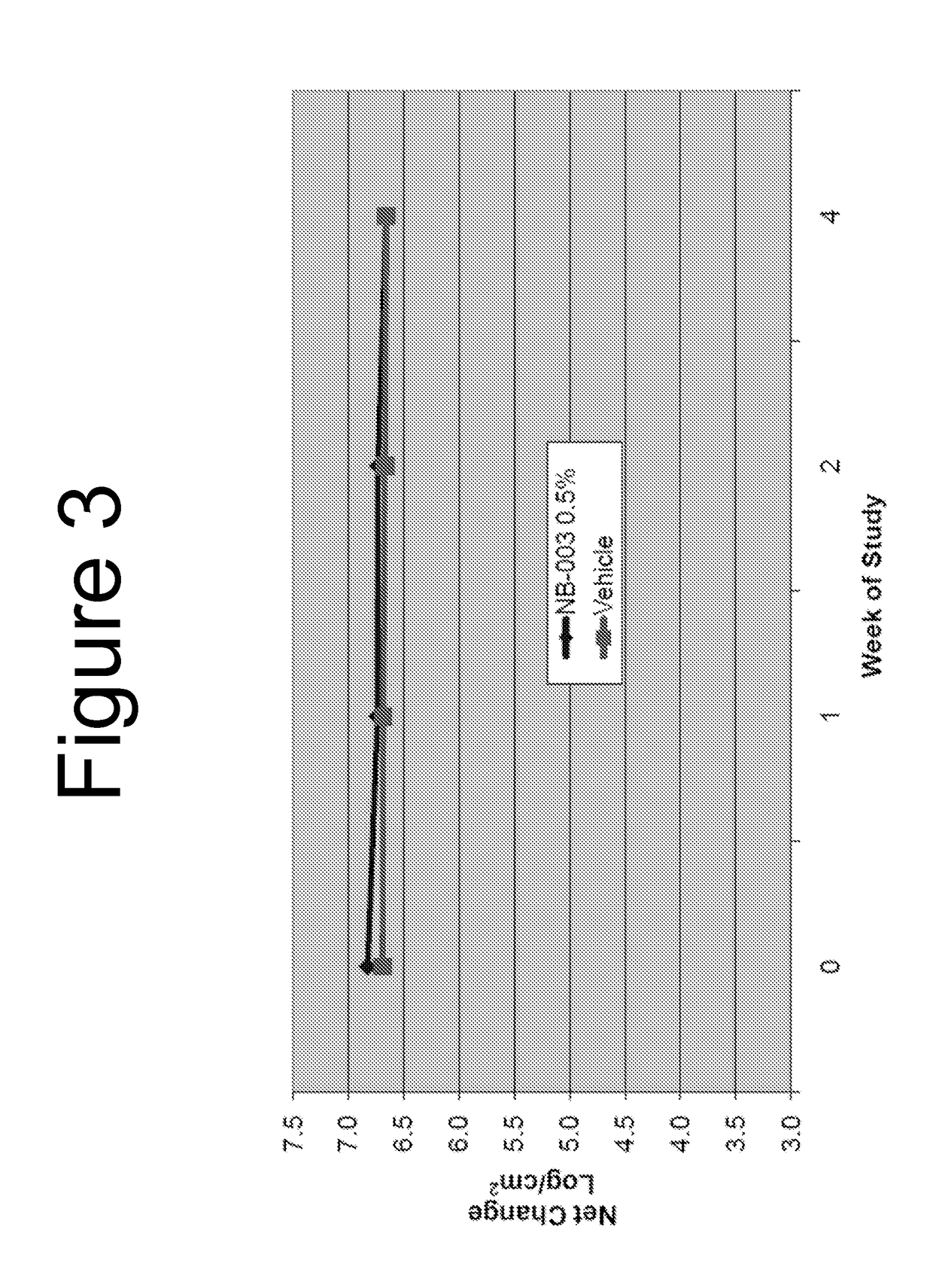Methods of treating acne using nanoemulsion compositions
- Summary
- Abstract
- Description
- Claims
- Application Information
AI Technical Summary
Benefits of technology
Problems solved by technology
Method used
Image
Examples
example 1
[0102]Nanoemulsions are produced by mixing a water-immiscible oil phase into an aqueous phase with a proprietary manufacturing method. The two phases (aqueous phase and oil phase) are combined together and processed to yield an emulsion. The emulsion is further processed to achieve the desired particle size. For a gel formulation, a thickening agent, such as Klucel can be added to the nanoemulsion. For example, Klucel is dissolved in water or any aqueous solvent and added to the nanoemulsion to achieve the desired concentration.
[0103]Since nanoemulsions are not a single small molecule, their relative activity can be expressed in terms of the concentration of cationic surfactant present, e.g., CPC or benzalkonium chloride.
[0104]NB-003 is an exemplary nanoemulsion comprising, in an aqueous medium, different amounts of the quaternary ammonium compound CPC, soybean oil, Tween 20®, ethanol, ethylenediaminetetraacetic acid (EDTA) and water. The ingredients of the nanoemulsions used in the...
example 2
[0105]The purpose of this example was to evaluate the bactericidal effect on pig skin inoculated with P. acnes following application of four different nanoemulsions varying in their concentration of CPC.
[0106]Following inoculation of pig skin with P. acnes, the pig skin was treated with four different nanoemulsion formulations, which differed in their concentration of CPC: (1) 0.01% NB-003; (2) 0.1% NB-003; (3) 0.25% NB-003; and (4) 0.5% NB-003. After 1 hour of treatment, the log reduction of P. acnes bacterial colonies was measured. As shown in FIG. 2, all concentrations of NB-oo3 tested were found to have high bactericidal activity in the preclinical skin model. No substantial difference was seen in the bactericidal results of the four different nanoemulsion concentrations tested.
example 3
[0107]The purpose of this example was to evaluate in vivo the efficacy of a nanoemulsion comprising 0.5% CPC in treating and / or preventing acne in human subjects. Effectiveness was evaluated by quantitative microbiologic determinations of P. acnes levels before, during and after treatment in healthy human volunteers. In a smaller group, the effects of vehicle were measured for comparative efficacy.
[0108]P. acnes are the most common gram-positive microaerophilic organisms found on normal skin. Although it has no intrinsic pathogenicity, P. acnes is believed to play a major role in the pathogenesis of acne. Most presently available topical anti-acne preparations such as benzoyl peroxides and topical antimicrobials exert their therapeutic effect through inhibition of P. acnes in vivo as demonstrated by a 1.0 to 2.0 logarithmic colony reduction.
[0109]Study subjects comprised healthy adult males and females 18 years of age and older with high levels of P. acnes colonization (10,000 colon...
PUM
| Property | Measurement | Unit |
|---|---|---|
| Temperature | aaaaa | aaaaa |
| Temperature | aaaaa | aaaaa |
| Temperature | aaaaa | aaaaa |
Abstract
Description
Claims
Application Information
 Login to View More
Login to View More - R&D
- Intellectual Property
- Life Sciences
- Materials
- Tech Scout
- Unparalleled Data Quality
- Higher Quality Content
- 60% Fewer Hallucinations
Browse by: Latest US Patents, China's latest patents, Technical Efficacy Thesaurus, Application Domain, Technology Topic, Popular Technical Reports.
© 2025 PatSnap. All rights reserved.Legal|Privacy policy|Modern Slavery Act Transparency Statement|Sitemap|About US| Contact US: help@patsnap.com



